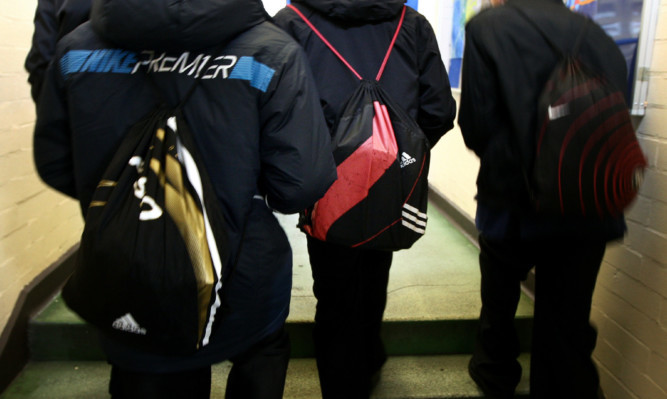Schools in Dundee have gained the unwanted status of having the lowest levels of pupil attendance in Scotland for the second time running.
The damning statistics, which emerged as part of a fact-finding mission published by the Scottish Government, show schools across the city ranked lowest among the country’s 32 local government areas.
Although pupil attendance has risen from 92% to 92.4% since 2010/11, schools in Dundee still finished bottom of the pile in 2014/15, behind much larger cities like Glasgow and Edinburgh. The current attendance rate represents just a 0.1% improvement on 2012/13, when the authority was also Scotland’s worst.
In the rest of Courier Country, schools in Angus fared the best, with the area having attendance figures of 94.3%.
Schools in Perth and Fife scored 93.9% and 93.5%, respectively.
Dundee councillor Laurie Bidwell, Labour’s education spokesperson, says part of the reason the city has failed to resolve the issue is down to teacher cuts carried out by Dundee City Council.
He said: “Being at the bottom of a national league table for pupil absence is not where we want to be in our schools and our city. Days lost through absence from school are days lost from learning.
“Of course, it is important to recognise that average attendances mask the fact that a majority of our pupils have excellent attendance at school.
“On the other hand, a relatively small proportion of pupils may have a very poor record of attendance which depresses the average attendance in a specific school and across the city.
“However we interpret them, however, there is a job to be done to raise the average city-wide attendance.
“The reduction in the number of guidance staff in secondary schools and the number of depute head teachers in our primary schools will not have helped our schools focus on tackling non-attendance. These cuts have reduced the staff who would directly follow up these issues with pupils and their teachers, as well as parents and carers.”
The area with the highest proportion of pupils attending school regularly was East Renfrewshire, with 95.6% of children attending.
Dundee City Council’s education convener, councillor Stewart Hunter, insisted the council is tackling the problem with its Every Day Counts programme, designed to reduce pupil absence. He said: “Apart from the impact on a pupil’s education, there is also the danger that children not attending school are putting themselves at risk in our communities. This is something that we want to stop.
“We are opening a dialogue with parents about attendance because it is one of the most crucial issues that we face in the city. We are absolutely determined to close the attainment gap across Dundee and we want to encourage our pupils to make the most of their time at school as possible.”
The Scottish Government could not provide figures for 2013/14, as data is now collected on a biennial basis.
